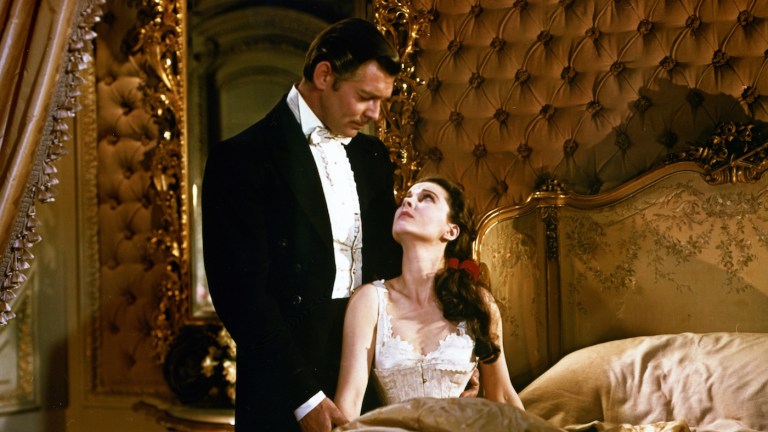Gone with the Wind Sweeps Back onto HBO Max with a Warning
Gone with the Wind, the landmark Hollywood classic and undeniable piece of Southern revisionism, returns to HBO Max with a warning label and accompanying special features.

Well, that didn’t last very long. Less than three weeks after Gone with the Wind was taken off HBO Max following criticism for its lack of context about the movie’s depiction of slavery and People of Color, the sweeping Hollywood epic is back. And along with it comes several warnings and special features that add welcome perspective on a movie that’s inception and legacy is complicated—to say the least.
If you go to HBO Max right now and click on Gone with the Wind, you’ll be greeted by a four-minute introduction from film historian Jacqueline Stewart of Turner Classic Movies. Stewart, who is a Professor in the Department of Cinema and Media Studies at the University of Chicago, says the following:
“You’re about to see one of the most enduringly popular films of all-time… but Gone with the Wind was not universally praised. The film has been repeatedly protested, dating back to the announcement of its production. From its prologue, the film paints the picture of the Antebellum South as a romantic, idyllic setting that’s tragically been lost to the past. Producer David O. Selznick was well aware that Black audiences were deeply concerned about the movie’s handling of the topic of slavery and its treatment of Black characters. Before shooting began, he assured the NAACP that he was ‘sensitive to the feelings of minority peoples.’
Despite Selznick’s assurances, the film follows the lead of [Margaret] Mitchell’s novel, presenting the Antebellum South as a world of grace and beauty without acknowledging the brutalities of the system of chattel slavery upon which the world is based. The film represents enslaved Black people in accordance to longstanding stereotypes: as servants, notable for their devotion to their white masters or for their ineptitude. And the film’s treatment of this world through a lens of nostalgia denies the horrors of slavery, as well as its legacies of racial inequality.”
This introduction is one of several new features that contextualize the movie, including a short Turner Classic Movies feature on Hattie McDaniel’s legacy as the daughter of slaves who became the first African American to win an Oscar due to playing Mammy in Gone with the Wind. There is also an hour-long panel discussion about Gone with the Wind’s dense history as both a work of art from the Hollywood system at the height of its 1930s powers and a love letter to an era of American history that had been warped and rewritten by following generations who wanted to deny the sins of the past or what the Civil War was actually fought over. That feature is labeled separately from the movie under the name “Gone with the Wind: A Complicated Legacy.”
All of these feel prudent and do well to offer texture to Gone with the Wind. The film is a major part of not only film history but American culture in general. Still, the highest-grossing movie of all-time when adjusted for inflation, it sold more tickets than any other blockbuster before or since and represented a multigenerational romantic fantasy. Of course the insidiousness is that it is such a beautifully wrought fantasy told in spectacular Technicolor, and with legendary performances, particularly by Vivien Leigh as Scarlett O’Hara, and an iconic Max Steiner musical score that the lie it’s predicated on—that the Antebellum South was a noble era of “Knights and Their Ladies Fair” and slaves were happy in bondage—became further popularized.
For this reason, the film should be considered a historic document and one that viewers have every right to ignore. But they also have the ability to watch the movie if they want to, and to be offered jumping off points into researching its many problems that extend beyond its obvious storytelling virtues.
As Stewart also noted, “Watching Gone with the Wind can be uncomfortable, even painful. Still, it is important that classic Hollywood films are available to us in their original form for viewing and discussion. They reflect the social context in which they were made and invite viewers to reflect on their own values and beliefs when watching them now… Eighty years after its initial release, Gone with the Wind is a film of undeniable social significance. It is not only a major document of Hollywood’s racist practices of the past but also an enduring work of popular culture that speaks directly to the racial inequities that persist in media and society today.”
